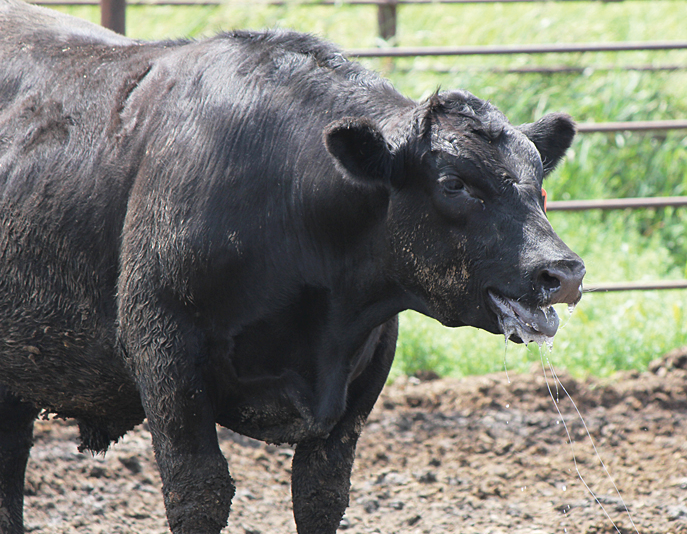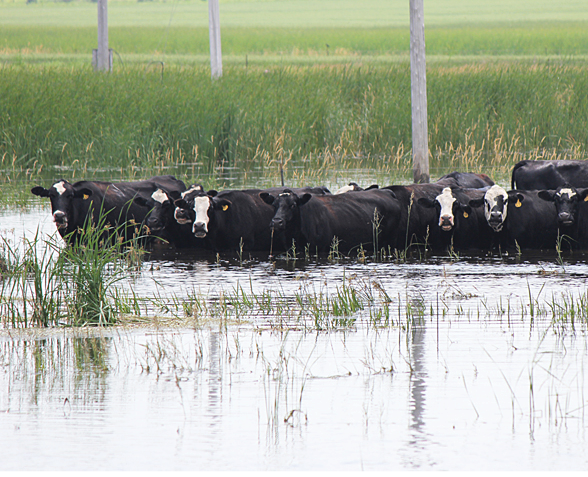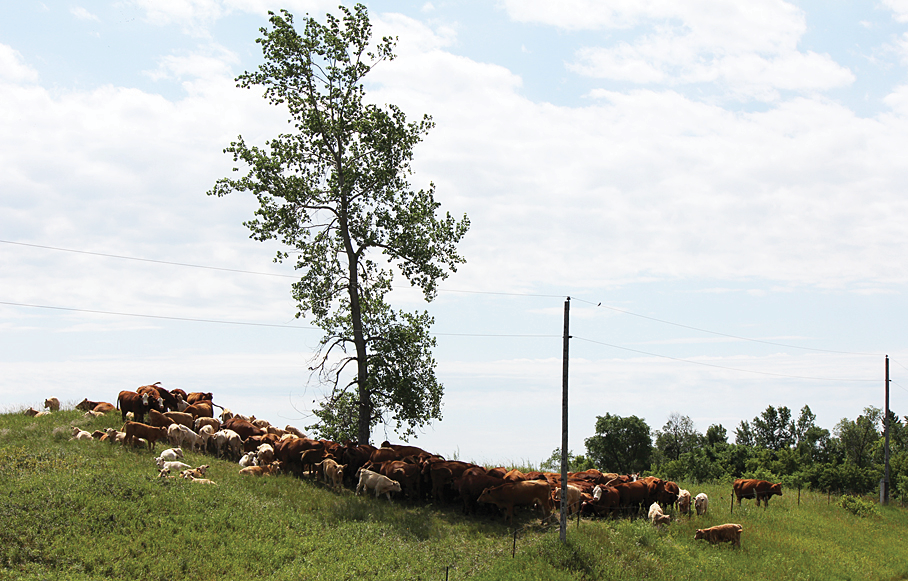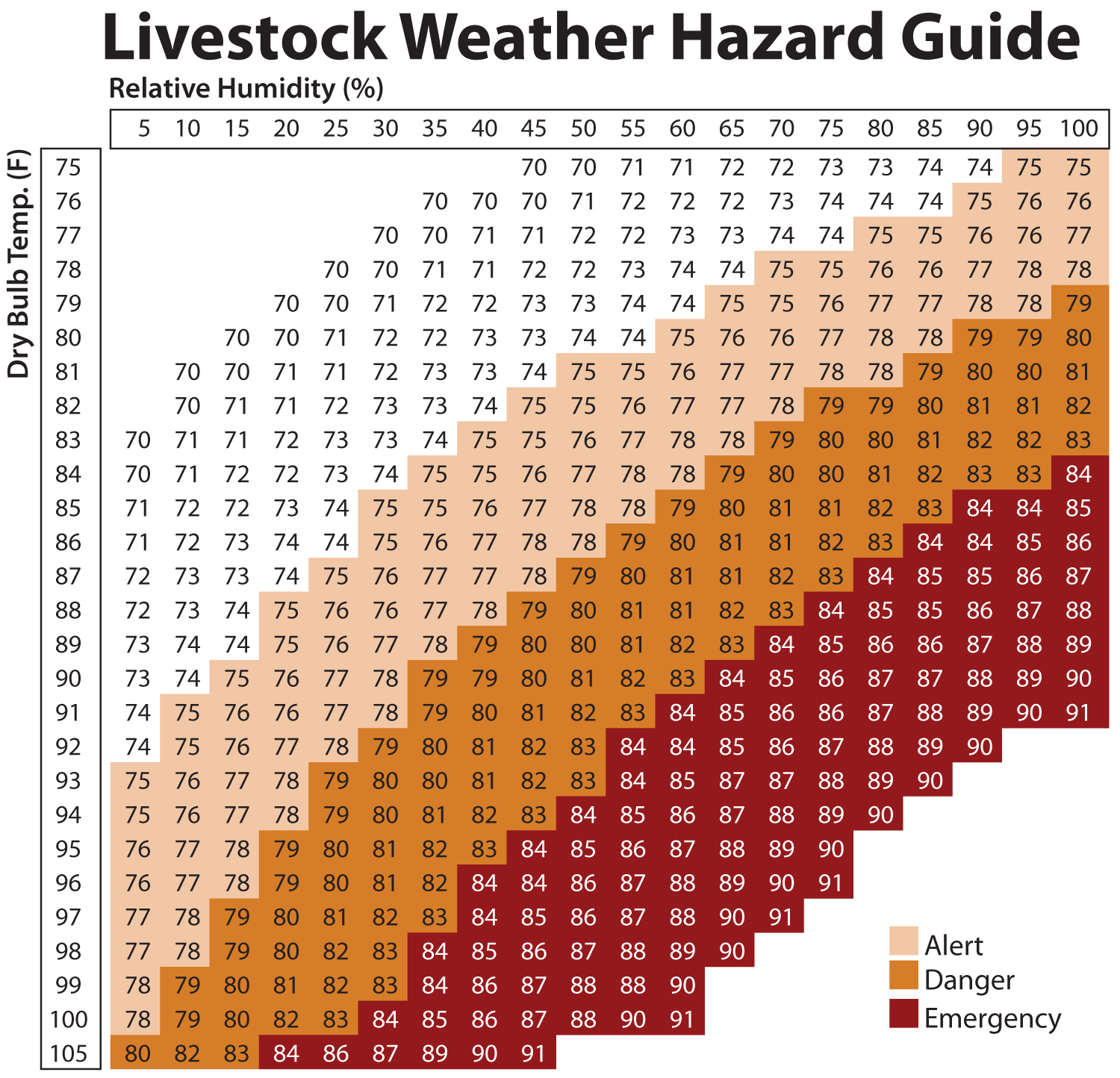The action plan is the essential actions you will take to protect the animals most susceptible to heat stress. The action plan should include the following:
Animals in heat stress need to drink water. Water trough capacity often is overlooked in Northern environments. Large amounts of water space typically result in winter freeze-ups, so producers tend to utilize smaller water troughs than recommended, especially for periods of heat. Most of the year, this type of water trough may provide animals with a sufficient water supply, but during periods of heat stress, water intake increases dramatically.
Each animal should have access to at least 2 inches of linear trough space per head in a pen. This will allow cattle access to water and prevent socially dominant animals from stopping subordinate animals from drinking. This means that in a pen with 200 animals, you need to have 400 inches of linear water space. If your cattle have access to only small water troughs, you should add space for water access during the summer months.
Evaluate water supply lines and ensure you have sufficient water pressure and flow capacity available to keep troughs full during times of peak water consumption. Imagine every calf that could possibly fit at a water trough drinking at the same time.
Move the animals’ feeding time to late afternoon or evening. This will allow rumen fermentation to take place during the cooler night temperatures, and it will increase lung capacity for the cattle during the hotter daytime temperatures. Normal digestive processes create heat in cattle. This body heat reaches a maximum several hours after the meal is consumed. When feeding cattle in the morning of high-heat-stress days, producers may be matching peak environmental temperature with peak body temperature from digestion. Altering feed deliveries accordingly can avoid some potential additional heat from digestion.
If feeding once daily, consider moving feed delivery until the afternoon. If feeding multiple times daily, consider feeding a small meal in the morning and a larger portion of the diet later in the afternoon. Decrease the amount of feed offerings during and for several days after heat stress. Effects of heat stress may linger, and aggressively increasing feed deliveries will increase metabolic heat production and possibly cause problems even though the environmental heat index has dropped below the typical heat stress threshold.
Air movement is an additional factor that promotes animal cooling. A breeze or wind moving over the hide of cattle promotes evaporative cooling. Blocking or hampering the movement of air impedes evaporative cooling. The same windbreaks, trees or other protections that are so vital during the winter to prevent frostbite and hypothermia can prohibit wind from circulating in pens during the summer. Remove unessential wind barriers (portable wind panels, equipment, weeds and other objects) to promote better air movement. Having mounds in pens gives cattle more elevation and possibly access to a microclimate with more wind.
When water is available, cattle may seek it to alleviate heat stress.
Cool the ground and the cattle gradually. Sprinklers function to cool the ground cattle are lying on as much as they do to cool the cattle. Set up sprinklers well in advance of anticipated heat stress because cattle take time to adapt to all changes. Use the sprinklers during mildly hot days so cattle become accustomed to the sights, sounds and the cooling effects of the sprinklers.
Be aware of the droplet size of water coming from the sprinklers. The goal is to have large droplets of water. A fine mist likely will make the pens even more humid and contribute to greater heat stress.
An alternative to sprinklers is running a hose into pens to wet the ground where cattle will be lying. Run the sprinklers or wet the ground the cattle will be on before the peak temperatures of the day.
Provide shade if possible. Solar radiation from sunny, clear skies contributes to body temperature in cattle. Black-hided cattle in the same pens with white-hided cattle will have internal body temperatures several degrees hotter than the white-hided cattle. Providing shade stops solar radiation from increasing body temperature. Although this may not be practical for all cattle in a feed yard, identify susceptible pens and be ready to intervene proactively with all measures possible.
Consider turning cattle out temporarily under trees for shade. The decrease in feed efficiency or loss of weight is minimal, considering the potential cost of losing cattle due to heat stress.
Cattle will congregate naturally under available shade. Provide shade if possible.
Adding bedding to the ground can reduce the temperature of the ground on which cattle are lying. Work done in Midwestern feedlots indicates that simply spreading straw on the ground can decrease the ground surface temperature by 15 F, compared with black dirt. Apply bedding to the tops of mounds and other areas likely to have wind. Wetting the bedding before or shortly after putting it out can reduce the temperature even further.
Control flies as much as possible because hot cattle tend to bunch together and flies only will add to the stress of hot days.
And maybe the most important, do not work cattle during temperature extremes. If working cattle is absolutely necessary, keep working time as short as possible, use calm animal-handling techniques to minimize stress related to handling, and consider running smaller groups through the facility or into holding pens. Provide sufficient water in holding pens. Get started as early in the morning as daylight will allow. Do not work in the evening after a heat-stress day; cattle need this time to recover. Reconsider the necessity of working cattle during these periods; some working events need to be postponed or canceled.
Pay attention to long- and short-term weather forecasts and have a copy of the temperature humidity index chart readily available. Determine the potential risk threshold and be prepared, even if the risk is several index units away. Additional solar heat, lack of air movement and heavy fat cover all can lead to disastrous effects of heat stress.




